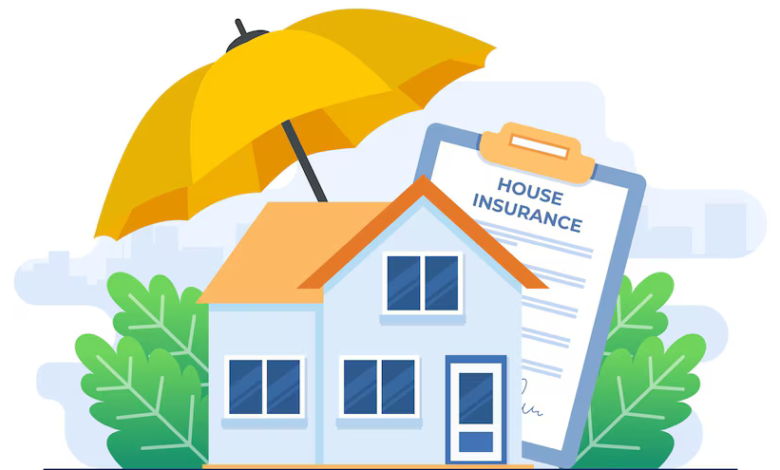Understanding Home Insurance Coverage: What’s Included and What’s Not

Home insurance is a vital safeguard for homeowners, providing protection against unforeseen events that could lead to financial distress. However, understanding the scope of your policy – what’s included and what’s excluded – is crucial to avoid surprises during a claim. In this article, we’ll thoroughly examine the components of home insurance coverage to help you make informed decisions.
1. The Basics of Home Insurance
Home insurance, also known as homeowner’s insurance, is a policy designed to protect your property and possessions. It generally covers:
- Structural Damage: Repairs or reconstruction costs for your home’s physical structure.
- Personal Belongings: Coverage for items like furniture, electronics, and clothing.
- Liability Protection: Legal expenses if someone is injured on your property.
- Additional Living Expenses: Costs incurred if you must temporarily live elsewhere due to home damage.
While these are the fundamental elements, each policy varies based on the insurer and the coverage type.
2. What’s Included in Home Insurance Coverage
A standard policy usually includes the following:
a. Dwelling Coverage
This covers the cost of repairing or rebuilding your home if it’s damaged by covered events, such as:
- Fire and smoke damage.
- Windstorms and hail.
- Vandalism or theft.
- Falling objects.
Note: The coverage limit is often based on your home’s replacement cost rather than market value.
b. Other Structures
Structures not attached to your home – like garages, sheds, or fences – are typically covered up to a certain percentage of your dwelling coverage limit.
c. Personal Property
This covers your belongings inside the home, including furniture, appliances, clothing, and electronics. Coverage may extend to items stolen outside your home, such as luggage during travel.
d. Liability Protection
If someone is injured on your property, liability coverage can cover medical bills, legal fees, and settlement costs. For example:
- Slip-and-fall accidents.
- Dog bite incidents.
e. Additional Living Expenses (ALE)
ALE coverage reimburses costs like hotel stays and meals if your home is uninhabitable due to a covered event.
f. Medical Payments
Medical payment coverage handles minor medical expenses for guests injured at your property, regardless of fault.
3. What’s NOT Included in Home Insurance Coverage
Standard policies have exclusions that require separate add-ons or policies for protection. Common exclusions include:
a. Flood Damage
Floods are typically excluded from standard coverage. You’ll need a separate flood insurance policy through private insurers or government programs.
b. Earthquake Damage
Earthquake coverage is not standard and must be purchased as an add-on.
c. Wear and Tear
Home insurance doesn’t cover normal wear and tear or aging of your home or belongings.
d. Intentional Damage
Damage caused intentionally by the homeowner is excluded.
e. High-Value Items
Jewelry, art, antiques, or collectibles often have limited coverage. Additional policies or riders are required for full protection.
f. Certain Business Activities
Running a business out of your home may not be covered under standard policies. Business insurance or riders are needed.
g. Pest Infestations
Damage caused by pests (termites, rodents) is excluded since it’s considered preventable through maintenance.
4. Types of Home Insurance Policies
Home insurance isn’t one-size-fits-all. Here are common types:
- HO-1: Basic coverage for named perils (e.g., fire, theft).
- HO-2: Broader coverage for named perils.
- HO-3: Comprehensive coverage for your home and belongings (except excluded events).
- HO-4: Renters insurance covering personal property and liability.
- HO-5: Premium coverage for your home and belongings.
- HO-6: Condo insurance for personal property and liability.
- HO-7: Coverage for mobile homes.
- HO-8: Special policies for older homes.
Understanding the type of policy you need ensures adequate protection.
5. Additional Coverage Options
To address exclusions, consider these add-ons:
a. Flood Insurance
Vital for homes in flood-prone areas, flood insurance covers damage from rising water.
b. Earthquake Insurance
Especially important in seismic zones, this covers rebuilding or repairs after an earthquake.
c. Valuable Items Coverage
Enhance coverage for high-value items like jewelry, fine art, or collectibles.
d. Home Office Coverage
Ideal for remote workers or small business owners, this covers equipment and liability.
e. Sewer Backup Coverage
Protects against damages caused by sewer backups, which are not included in standard policies.
6. Tips for Maximizing Coverage
a. Conduct Regular Reviews
Evaluate your policy annually or after major life changes to ensure adequate coverage.
b. Maintain Your Home
Regular maintenance reduces the risk of damage and keeps premiums low.
c. Document Your Belongings
Keep an inventory of your personal property, including photos and receipts, to simplify claims.
d. Understand Your Policy
Read the fine print to avoid surprises. Ask your agent about ambiguities.
e. Opt for Replacement Cost Coverage
Choose replacement cost coverage over actual cash value to ensure full reimbursement for damaged items.
7. Common Misconceptions
Misunderstandings about coverage can lead to costly mistakes. Here are a few examples:
- “My Home is Fully Covered”: Without add-ons, some risks like floods or earthquakes are excluded.
- “Renters Don’t Need Insurance”: Renters insurance is crucial for personal property and liability protection.
- “Older Homes Cost Less to Insure”: Older homes may have higher premiums due to outdated systems.
8. Real-Life Scenarios
Case 1: Flood Damage
John learned his policy didn’t cover flood damage after a storm. He added flood insurance to protect his home.
Case 2: High-Value Items
Emma discovered her standard policy had a $1,500 limit for jewelry. She purchased additional coverage for her engagement ring.
Case 3: Earthquake Protection
Mike upgraded his policy with earthquake insurance after moving to a seismic zone.
9. Frequently Asked Questions
Q: Can I customize my policy?
Yes, most insurers offer add-ons to tailor your policy to your needs.
Q: How do I file a claim?
Contact your insurer promptly, document the damage, and submit required paperwork.
Q: Are rental properties covered?
Landlord insurance is required for rental properties, covering structure damage and liability.
Conclusion
Understanding home insurance coverage is essential for protecting your home and finances. By knowing what’s included and excluded, you can customize your policy to fit your needs. Regularly review your coverage, add necessary riders, and work with a trusted agent to ensure comprehensive protection.
With this knowledge, you’re equipped to make informed decisions and protect your most valuable asset – your home.








